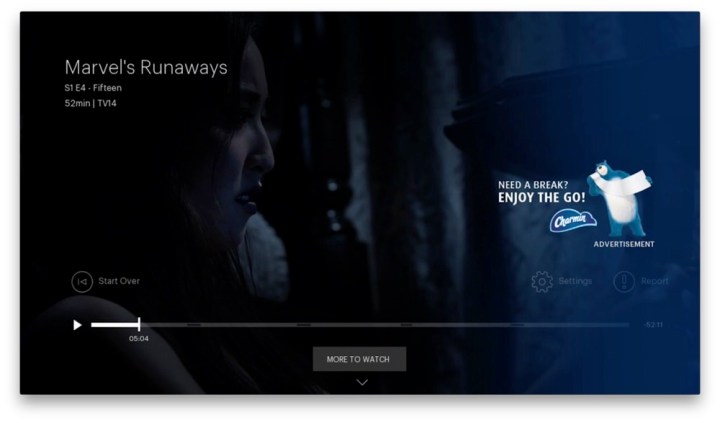
Hulu, the ad-supported streaming service with more than 25 million subscribers, is launching a new ad format that will come into play when viewers hit the pause button. Given that existing ads on the service are videos, it’s reasonable that folks might fear a similar style of ad will take over their screens when they pause. But you can rest easy: These new ads are static images — with no movement and no audio.
In a blog post, Jeremy Helfand, Hulu vice president and head of advertising platforms, has dubbed these new commercials Pause Ads, saying they “provide a non-intrusive, viewer-initiated ad experience that is both delighting to viewers and effective for brands.” The post includes a sample video that shows the new ads in action. Sure enough, there’s not much to be upset about — about three seconds after the pause button is clicked, a small ad that sits atop a gradient overlay appears on the right side of the screen. You can clearly see both your paused program, as well as the ad, and yet they remain distinct from one another.
The new format came about after Hulu conducted research into what viewers would find most acceptable. “Our Pause Ad research found that consumers generally preferred ads that were subtle and non-intrusive,” Helfand said, “and that extensive audio and video when pausing was considered disruptive.”
Hulu’s partners for the beta of Pause Ads are Coca-Cola, and Charmin — highly appropriate given two of the main reasons people pause TV — and the new format is expected to launch in the second quarter of 2019 for “select content.” The Pause Ads won’t be appearing on episodes that have been rated TV-MA. Hulu will allow advertisers to target or “anti-target” (explicitly avoid) viewers based on genre, according to TechCrunch.
Helfand did not state whether or not Pause Ads would be limited to those Hulu subscribers who are on the less-expensive ad-supported plan, or if the no-ads subscribers would see them too.
Hulu recently adjusted its pricing plans, lowering the least expensive option, while upping the price on its Live TV option. That move came on the heels of Netflix’s announced price increases.



